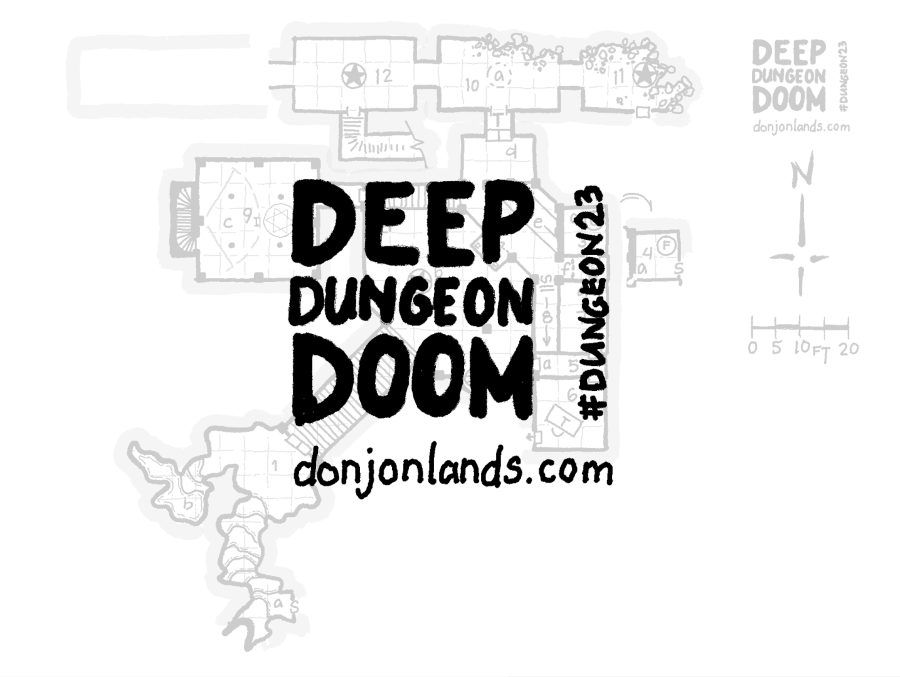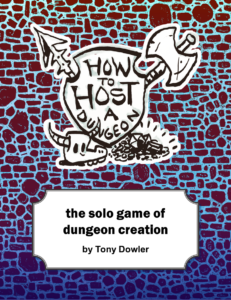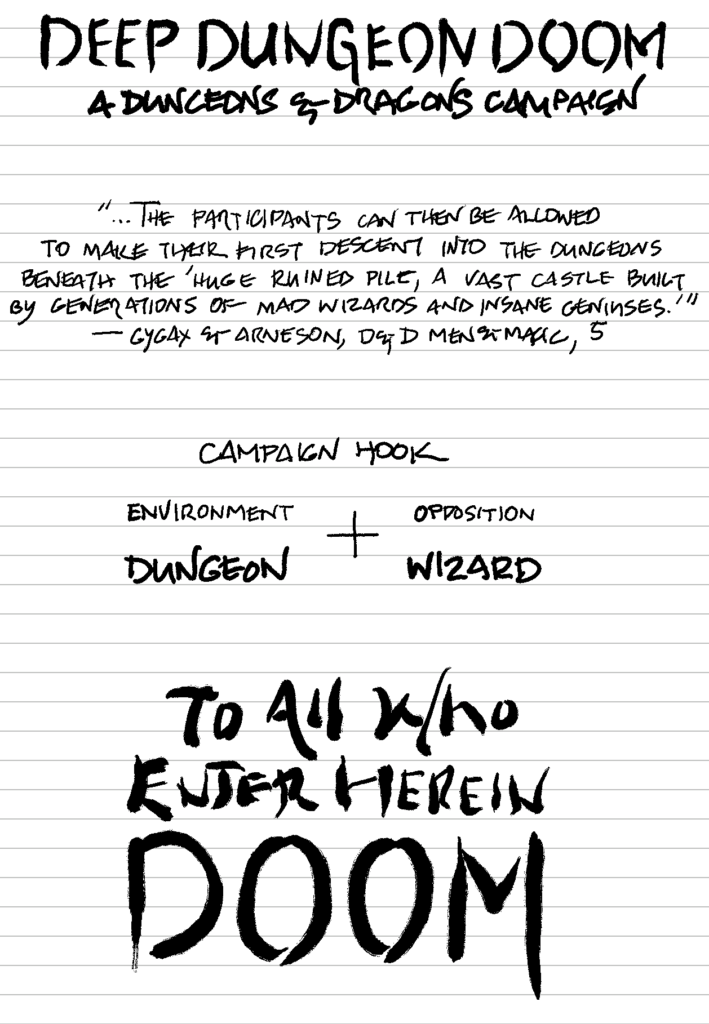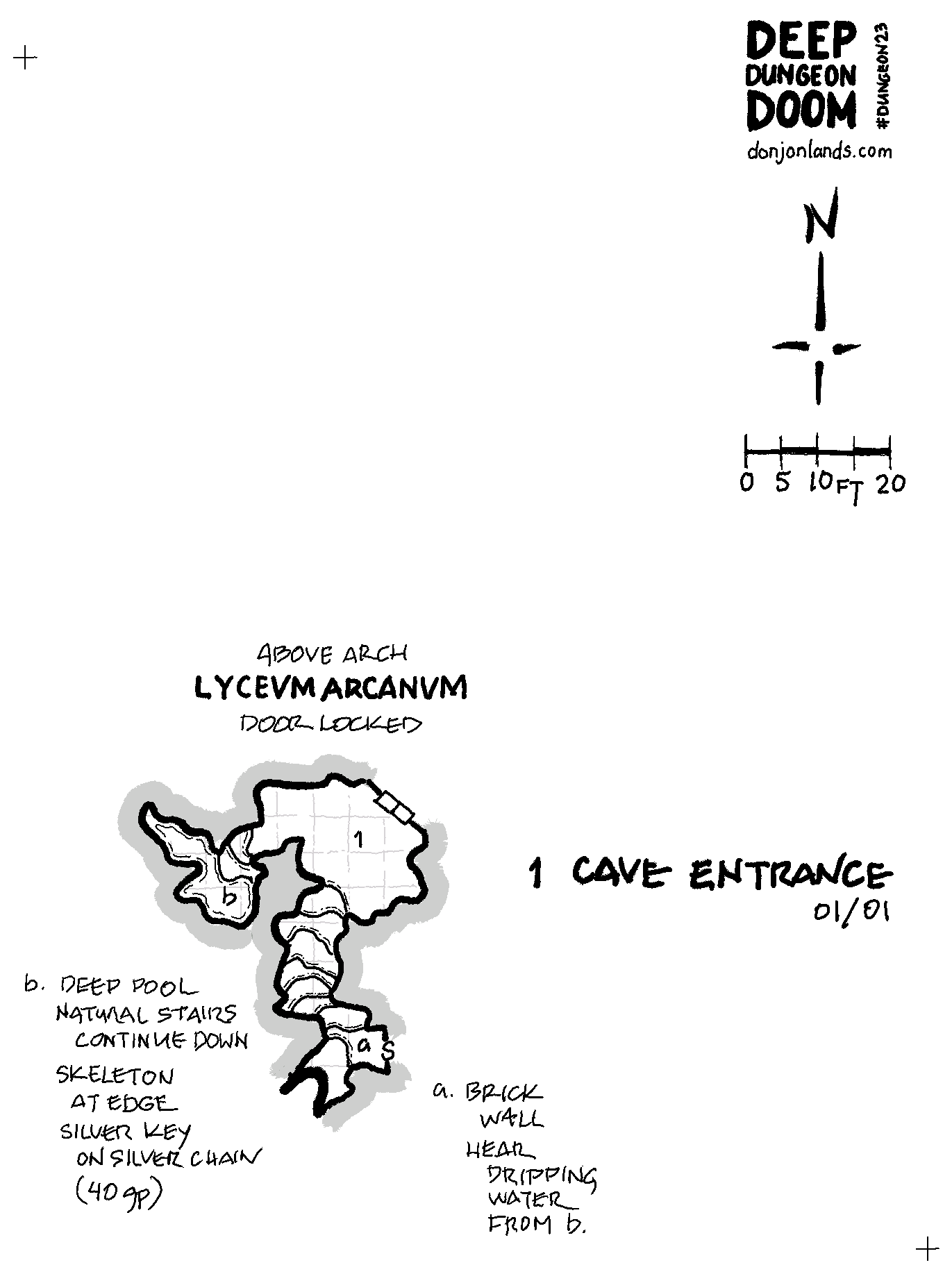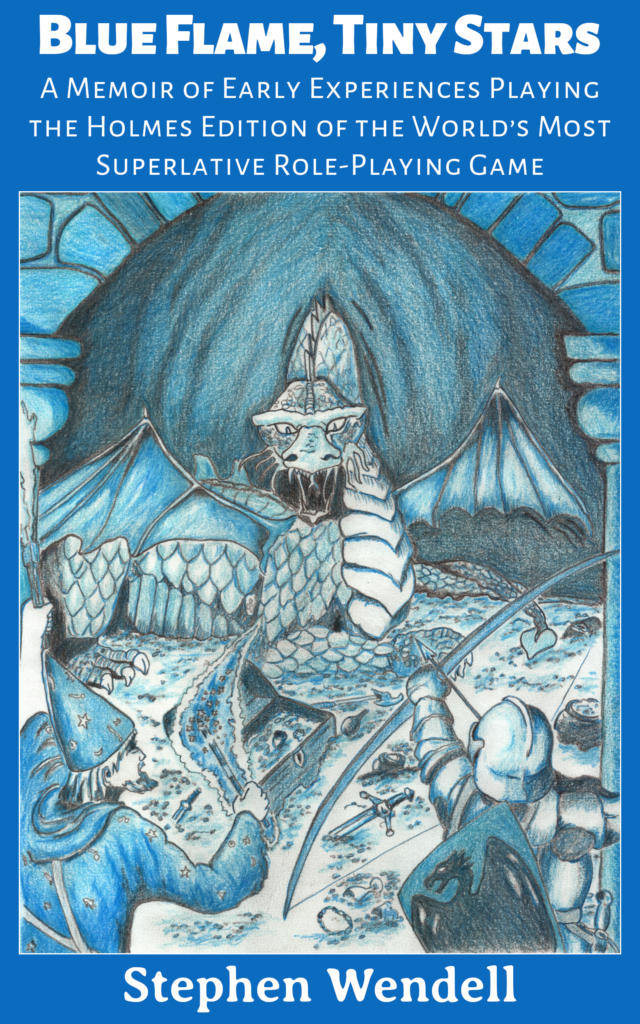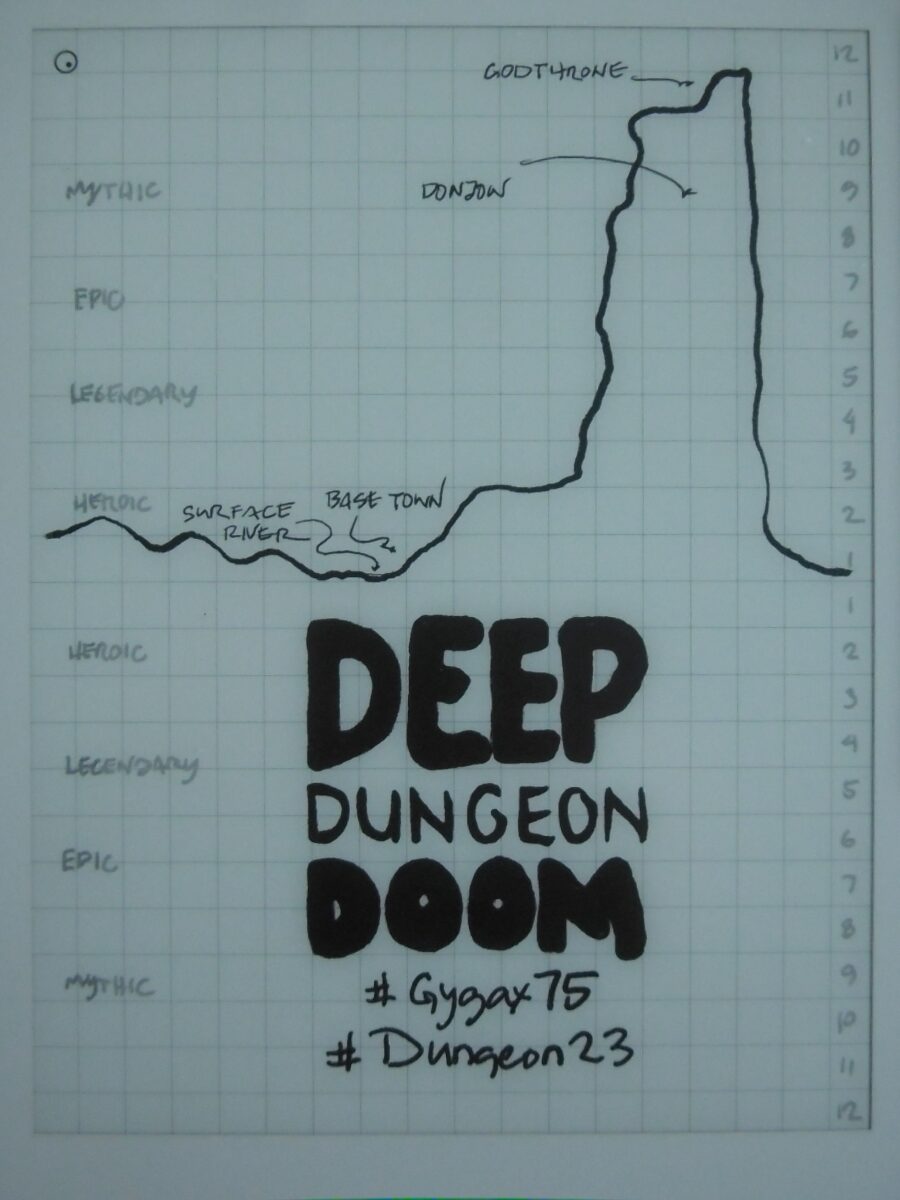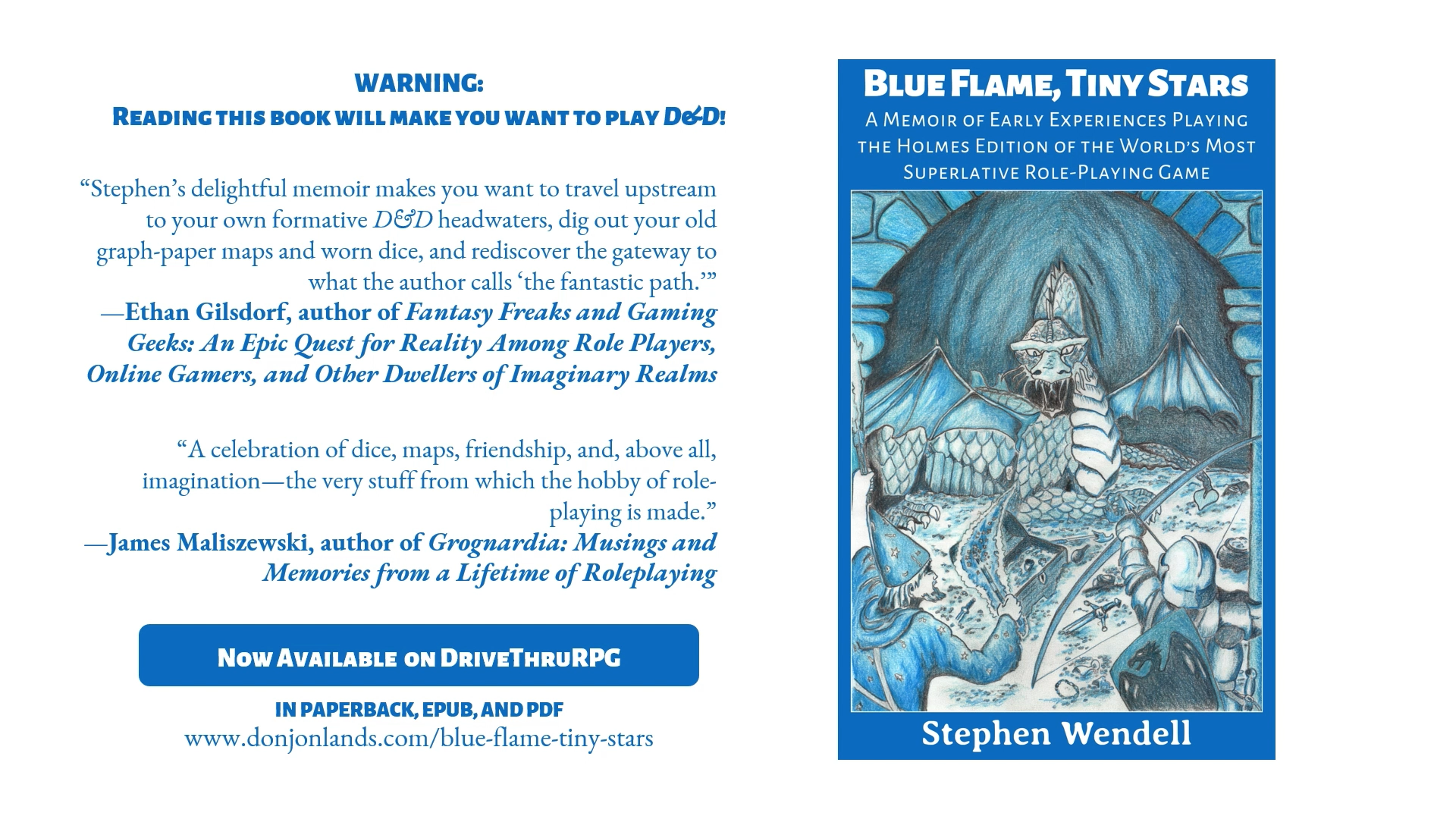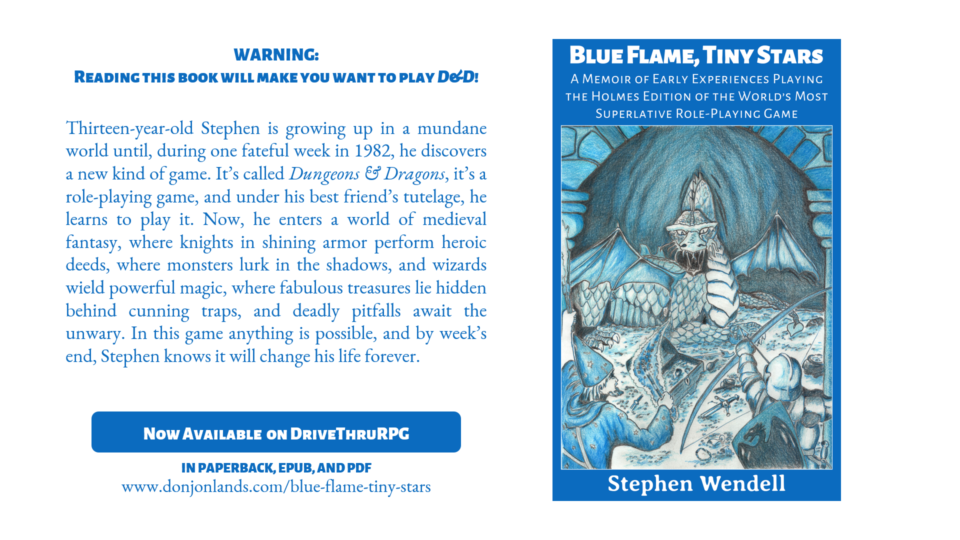Dirty Fighting
This is the 17th in a continuing series of articles, which reedits house rules for Holmes Basic D&D from 40-year-old game club newsletters. Mentions of house rules are in bold text and followed by a [bracketed category designator].
For rules category descriptions and more about the newsletters, see “About the Reedition of Phenster’s.” For an index of articles, see Coming Up in “Pandemonium Society House Rules.”
Phenster’s Pandemonium Society House Rules is a work of fiction. Names, characters, businesses, events, incidents, and newsletters are either products of the author’s imagination or are used in a fictitious manner. Any resemblance to actual persons, living or dead, or actual events is pure coincidence.
The following excerpts are from Phenster’s contribution to L’avant garde #53 (March 1983). Though out of order, they reproduce the entire article.
Dirty Fighting
Sometimes we want to do something in combat besides attacking with a weapon. Like the time Mandykin had to fight an ogre all by herself after she got separated from the group by a falling portcullis. We couldn't lift the portcullis, so the rest of us went to find another way around. Mandykin found the ogre's lair first. She knew she couldn't beat it in a fair fight, so she had to fight dirty.
She had a bag of salt that we use to throw at zombies, so she threw a handful in the ogre's face, first. She had to make a missile attack with a -4 penalty. She hit, so the ogre was blinded. (Sometimes we throw sand, too, and it's the same.) Then she wanted to trip it. So she rolled her hit dice and added +2 for her high dexterity (17) against the ogre's hit dice. She had 7 4-sided vs. the ogre's 4+1 d8s. It was close but she did it. By the time we found the long way around, Mandykin had the ogre tied up and was sitting on its belly.
Then there was the time we fought a balrog at the edge of the Pit to Hell. Only Beowulf and Jinx had magic weapons, and my spells weren't working on it. Jinx said, "Let's rush it." I said, "What?!" He said, "We'll push it back into the Pit to Hell." I said it was a bad idea, because the balrog could immolate. But Beowulf asked me if I had a better idea and I didn't. Hazard said we should all throw our hit dice (+ damage bonus) against the balrog's hit dice. Only four of us could push, and we got 88 all together. The balrog got 49, so we pushed it into the Pit, but it immolated! We all got burned pretty bad, and Jinx got caught by the balrog's whip and was jerked down into the Pit to Hell.
Shoving, Tripping, and Throwing Sand/Salt
Instead of attacking with a weapon, a combatant may take one of the following actions. A character with multiple attacks with a weapon takes only one of these actions per round.
Hit Dice Roll
Shove [E] and Trip [E], as well as Wrestling [E] farther below, use opposed hit dice rolls. That is, each side rolls dice equal in size and quantity to their hit dice. A 6th-level magic-user rolls 6d4; a 10th-level fighter, 9d8+2.1 Constitution bonuses or penalties to hit points are not counted. The higher roll wins the contest.
Shove [E]
Attackers and defenders make opposed hit dice rolls, adding their Strength bonus or penalty to melee attack.2 A successful shove moves the defender a space in the direction opposite the attacker. Attackers move with the defenders, and the combatants are in close quarters (see Close Quarters). In case of failure, the combatants are in close quarters, but the defenders do not move.
Trip [E]
To trip an opponent, an attacker must step into close quarters with the defender. Attacker and defender then make opposed hit dice rolls, adding their Dexterity bonuses or penalties to AC and missile fire.2 A successful trip indicates the defender is prone. (See Prone [E].) On a failed attempt, the defender may immediately attempt a trip, becoming the attacker. A series of failures takes place in an instant of struggle.
Throw Sand/Salt [P]
The attacker, within 10' of the target, makes a missile attack with a −4 penalty. On a hit, the target must make a saving throw vs. Paralysis or be blinded for 2 to 5 rounds, suffering +2 penalty to AC and −4 to attack rolls.
Note: A penalty to an attack roll to effect a particular result is danger close to allowing PCs to “aim for the eyes” with any attack. When using this [P] Pandemonium rule, be prepared to defend against arguments for such “called shots.”
Source of Opposed Hit Dice Rolls
An opposed hit dice roll is also used in a Shield Wall Push [P] (see “Phalanx Fighting” and “The Phalanx and the Shield Wall.”) I find a similar procedure in the Strategic Review Vol. 1, No. 2 (Summer 1975) under the heading QUESTIONS MOST FREQUENTLY ASKED ABOUT DUNGEONS & DRAGONS RULES (3). In a combat example, a group of orcs grapple with a hero. To be successful, the orcs must roll their combined hit dice and beat the hero’s hit dice roll. Prior to the opposed roll, each orc must make a successful attack roll against the hero before its hit dice can be counted in the grapple. The Pandemonium Society seems to ignore this step.
Nonlethal Attacks
Whenever we have a brawl at the Nine of Pentacles (that's our local Sword & Board), we fight with our fists or wrestle, or we use makeshift weapons, like bottles and chair legs. In a fist fight, you do 1 + STR bonus in NONLETHAL damage, which means, if you go down, you aren't dead, you're just knocked out. Makeshift weapons do 1-3 real damage. We can get in big trouble if we kill someone in base town though, so we have to be careful with that. Wrestling is just another hit dice throw that you add your damage bonus to or your dex bonuses. It doesn't really do any damage, but if you win you can make the other guy do what you want, like pin him to the floor or make him say "Uncle" or just about anything else you can think of.
Fist Fighting [E]
A fist does 1 point of damage. Add the attacker’s Strength bonus2 to damage as normal. All damage is nonlethal.
Knocked Out [E]
When a creature takes nonlethal damage equal to its current hit point total, it falls unconscious for 1 to 6 rounds.
Wrestling [E]
The attacker chooses whether to use Strength or Dexterity and steps into close quarters with the defender. The combatants make opposed hit dice rolls adding the chosen bonus or penalty. If the attacker wins, a desired effect takes place.
Feint
Mandykin wanted a way she could do a feint in melee. Hazard said it was a "subtle action," and it's assumed in a combat round. But Mandykin said a feint is about as subtle as a parry and there's a rule for parry right in the book.
A feint is when you trick your opponent into thinking you're going to do one thing, but then you do something else. You catch him off guard, so you get a bonus (+2) on your attack. It only works against man-type creatures. You do a feint on your go, then you have to wait until your opponent goes to see if he fell for it: Roll a 20-sided die, subtract your level, add your opponent's level or hit dice and his bonus for a high wisdom (if he has one). If you roll under your dexterity score, he's tricked! and takes a -2 to his attack, and you attack at +2. If he isn't tricked, he gets a +2 on his attack (because you left yourself open), and you attack normally.
Feint [P]
To feint, an attacker makes a Dexterity check, subtracting his or her level and adding the opponent’s level (or hit dice), plus the opponent’s Wisdom bonus. If successful, the opponent attacks with a −2 penalty, and the attacker, immediately afterward, makes an attack with a +2 bonus. When the feint fails, the opponent attacks with a +2 bonus, and the attacker with a −2 penalty.
Note: I add the attacker’s −2 penalty in the failure case to discourage overuse, and still I class this one as [P] Pandemonium.
1 We’ll see later that the Pandemonium Society uses hit dice by level progression from Greyhawk (1976, 10-11).
2 Also later, we’ll see ability score bonuses and penalties.
